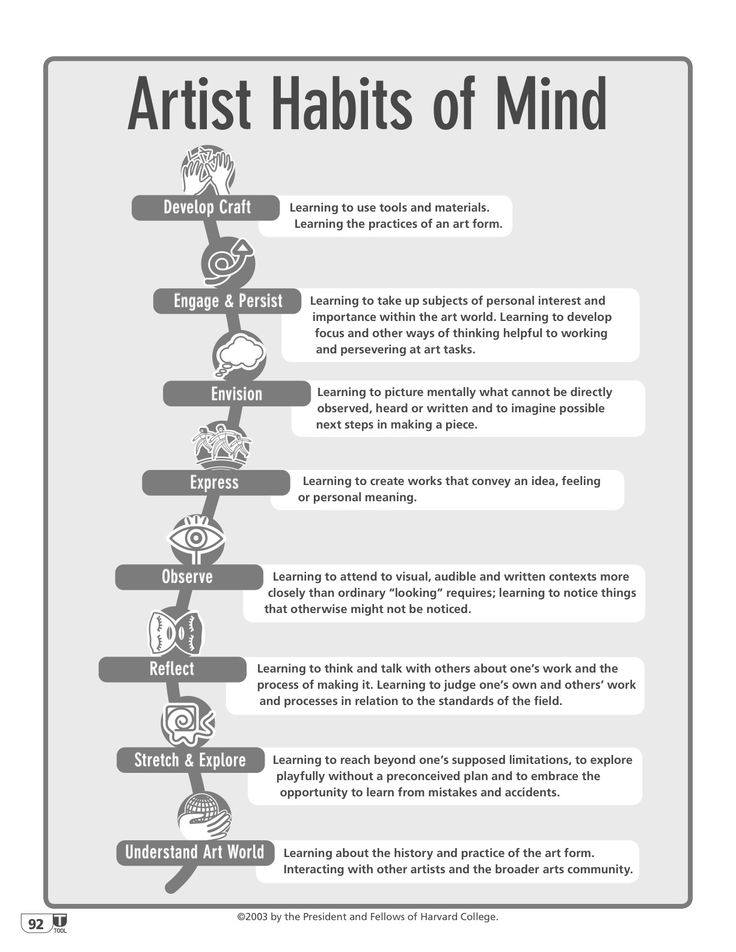

Arts is in parenthesis here as it can easily be switched with other disciplines, like science or history. Understand (Arts) Community: Learning to interact as an artist with other artists (i.e., in classrooms, in local arts organizations, and across the art field) and within the broader society.Stretch & Explore: Learning to reach beyond one’s capacities, to explore playfully without a preconceived plan, and to embrace the opportunity to learn from mistakes.Reflect: Learning to think and talk with others about an aspect of one’s work or working process, and learning to judge one’s own work and working process and the work of others.

#Self assessment for studio habits of mind pdf#
Then again, quite hands off, I encouraged them to write an artist statement to go alongside their artwork, with the simple prompt “Tell me about your artwork” (thanks After the artist statements were written these became their scripts for their flipgrid videos.8 Studio Habits of Mind – PDF Available HERE Once the challenge was over, on the 4th lesson the students entered the classroom and completed a gallery walk writing one kind/positive comment on each of their classmates artwork. I saw where support will be needed in searching for ideas/inspiration, where specific art technique/application of materials will be required and which students may need additional help to find something meaningful, to drive their creative process. I made so many new discoveries about my students, fascinating to witness. It is during this “art challenge” where I saw self-management skills in action, where I see their ability to really flourish with making meaning enter into their artwork – it was like a rocket launching, I could not have slowed them down even if I had tried. Once planning sheets where signed off this is where I stood back, observed, took notes of strengths and areas where some may need support. We used this planning sheet to guide the process: G5 art challenge planning sheet Let us know what materials you would like to work with Design and plan an artwork to show your thoughts / feelings / opinions on the themeĤ.

**On a side note some nifty themes the students came up with were: “My future, present and past”, “love”, “my personality”ģ. Choose a theme from this list (or use your own idea**): Being under pressure – It’s ok to be different – Connections – My personal history – What I wish people knew about me – My hope for the future is… – I want a world without… – What I wish adults knew about being a 5th grader… On my ever-continuous journey to support my dear students to feel like they are all artists and all have the capacity to create something meaningful/beautiful/special/purposeful to them – and to ensure they never leave my room saying “I’m no good at art” – because as we know, there is so much more to art education than what is behind that statement! For my Grade 5 cohort (80+ kiddos) I created a pre-assessment in the form of an art-challenge that goes a little something like this:Ģ.


 0 kommentar(er)
0 kommentar(er)
